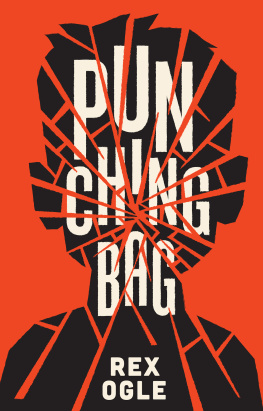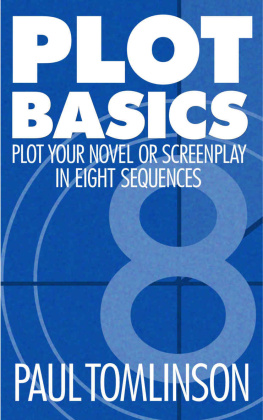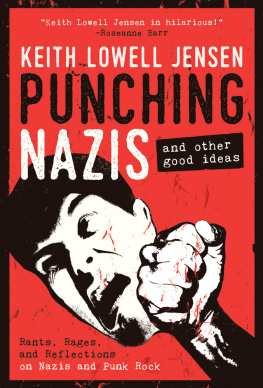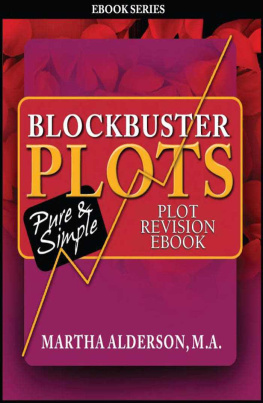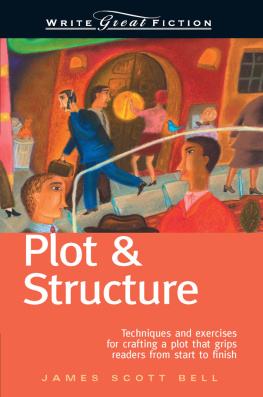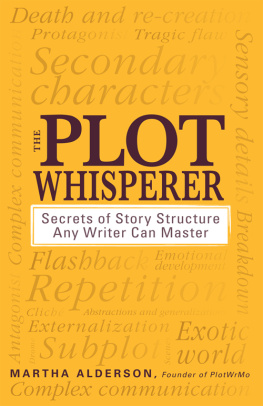Punching Babies
(a how-to guide)
Adron J. Smitley
Copyright 2014 Adron J. Smitley
All rights reserved.
ISBN-10: 1502743531
ISBN-13: 978-1502743534
Reviews help keep writers writing. Please do me the fantastic favor of taking the time to review this book on Amazon.com as well as anywhere else if you found the information useful. It makes a big difference, and I would very much appreciate the kindness. And please, spread the good word!
~CONTENTS~
| The Guaranteed Warning | |
| The 3 (4) Acts | Pg #2 |
| The 8 Sequences | Pg #5 |
| The 20 Sections | Pg #12 |
| The 40 Events | Pg #34 |
| The 120 Blocks | Pg #52 |
| The 240 Bits | Pg #53 |
| Structure & Design | Pg #57 |
| Notes | Pg #66 |
| Beat Sheets | Pg #72 |
HOW TO MAKE WRITING A NOVEL AS EASY AS PUNCHING BABIES
1: the guaranteed warning
This is your last chance. After this there is no turning back. You take the blue pill, the story ends, you wake up in your bed and believe whatever you want to believe. You take the red pill, you stay in wonderland and I show you how deep the rabbit hole goes.
Remember, all Im offering is the truth. Nothing more.
I guarantee you that after reading this book you will never read any novel nor watch any movie the same way again. And thats not just a guarantee but also a warning. If you dont enjoy knowing what will happen in stories before it happens then close this book right now. Refuse the Call. Take the blue pill. But remember that stasis equals death.
Now, your one and only homework assignment is to watch the original movie The Matrix. Even if you have already seen it, just take the time to sit down and watch it once more after reading this book.
Of course, thats assuming youre going to choose to turn this page...
2: The 3 (4) Acts
Every story has 3 main parts: a Beginning, a Middle, and an Ending. These parts are more commonly known as Act 1, Act 2, and Act 3. On average, Act 1 makes up 25% of your story, Act 2 makes up 50%, and Act 3 the last 25%. This applies to novels as well as movies because all stories follow the same formula regardless of their medium. And because Act 2 makes up 50%, we divide it into two parts consisting of Act 2a and Act 2b, each making up 25% of the whole.
So now we have:
Act 1 (The Beginning): 25%
Act 2a (The Middle 1 st half): 25%
Act 2b (The Middle 2 nd half): 25%
Act (The Ending) : 25%
But what does each Act represent other than simply the Beginning, the Middles, and the Ending? Act 1 is the Exposition where the protagonists normal world and everything in it are established, and where we discover the main problem that is the entire point of your story. Act 2a is the Positive Rising Action where the protagonist pursues that goal while achieving more successes than failures. Act 2b is the Negative Rising Action where the protagonist suffers more failures than successes. Act 3 is the final crisis and Climax where the protagonist either achieves victory over the antagonist or suffers defeat.
ACT 1, the Beginning, the Exposition, introduces us to the protagonist (now referred to as the Hero), the Heros goal, and the antagonist (now referred to as the Villain).
ACT 2A, the Middle 1 st half, the Positive Rising Action, shows us the Hero entering a new world and gaining new skills while meeting new allies and making new enemies.
ACT 2B, the Middle 2 nd half, the Negative Rising Action, shows us the Hero struggling with his Allies as well as against the Villain and his Minions.
ACT 3, the Ending, the final crisis and Climax, shows us the Hero confronting the Villain face to face, the outcome of this event, and its immediate impact.
Think of Act 2a and Act 2b as opposites. Things get progressively better for the Hero in Act 2a, while things get progressively worse for the Hero in Act 2b. Imagine two opposite staircases connected together at their tops and forming a peak, that peak being the Midpoint. The Hero thinks his goal is to reach that peak, and thus his Positive Rising Action is him climbing up the stairs to the very top, each step bringing him closer towards his apparent goal.
That is Act 2a.
But once the Hero reaches the top, stops and stands looking out high overhead and feeling a sense of both security and achievement (that peak is the Midpoint, or the Heros False Victory), someone (namely the Villain) suddenly shoves the Hero from behind (which is what that well-known twist is in all story Middles connecting the 1 st half with the 2 nd half) and sends him crashing down the descending set of stairs, each tumbling step taking the Hero closer towards the bottom and thus his Negative Rising Action.
That is Act 2b.
You could also rename Act 2b the Villains Positive Rising Action, because the Hero achieves a False Victory near the end of Act 2a while he suffers a False Defeat near the end of Act 2b, and the Heros False Defeat near the end of Act 2b is also known as the Villains False Victory.
See where Im going with this? Opposites indeed. Also, patterns.
Now, take out a notebook and on its own page make a list of 1 through 4. Describe the 4 Acts of your story in one sentence each. Make these sentences as long or as short as you need them to be, and when you are done you will have a very broad summary of your entire story in four easy sentences:
Act 1: 25% (Exposition)
Act 2a: 25% (Positive Rising Action)
Act 2b: 25% (Negative Rising Action)
Act 3: 25% (Climax)
The End (100%)
Next we further break down the 4 Acts into their 8 Sequences...
3: the 8 sequences
The 4 Acts structure of Story is further broken down into its 8 Sequences, and each of these Sequences represents an average of 12.5% of your story:
-Act 1- (25%)
1. Setting Up Your Story (12.5%)
2. Opening The Door (12.5%)
-Act 2a- (25%)
3. Entering A New World (12.5%)
4. Achieving The False Victory (12.5%)
-Act 2b- (25%)
5. Things Fall Apart (12.5%)
6. Suffering The False Defeat (12.5%)
-Act 3- (25%)
7. The False Solution (12.5%)
8. The True Resolution (12.5%)
Here is a brief description of each of the 8 Sequences:
SEQUENCE 1: SETTING UP YOUR STORY: shows a typical day in the life of your Hero. This is where we learn who the Hero is while introducing his normal world, including everyone and everything in it. Everyone has problems in their life, so show the Hero dealing with his problems, the more relatable the better.
SEQUENCE 2: OPENING THE DOOR: something new enters the Heros normal world for the first time. This something must impact the Heros world in a permanent way, as Sequence 2 begins with what is known as a Catalyst. What exactly is a Catalyst? Failing a drivers test because you forgot to signal properly is NOT a Catalyst, but failing a drivers test because you ran over an old lady IS. And Sequence 2 isnt just the Catalyst, but the Heros reaction then decision of what he needs to do about it.
SEQUENCE 3: ENTERING A NEW WORLD: the Hero voluntarily makes a leap of faith into a new world (new because he has never dealt with such a problem of this nature before, which makes Sequence 3 all about the Hero being a Fish Out Of Water) and is immediately introduced to the rules of this new world and how it operates. And as with all worldly travels, the Hero meets new people of this new world as well, people obviously more acquainted with it than he is.
Next page


